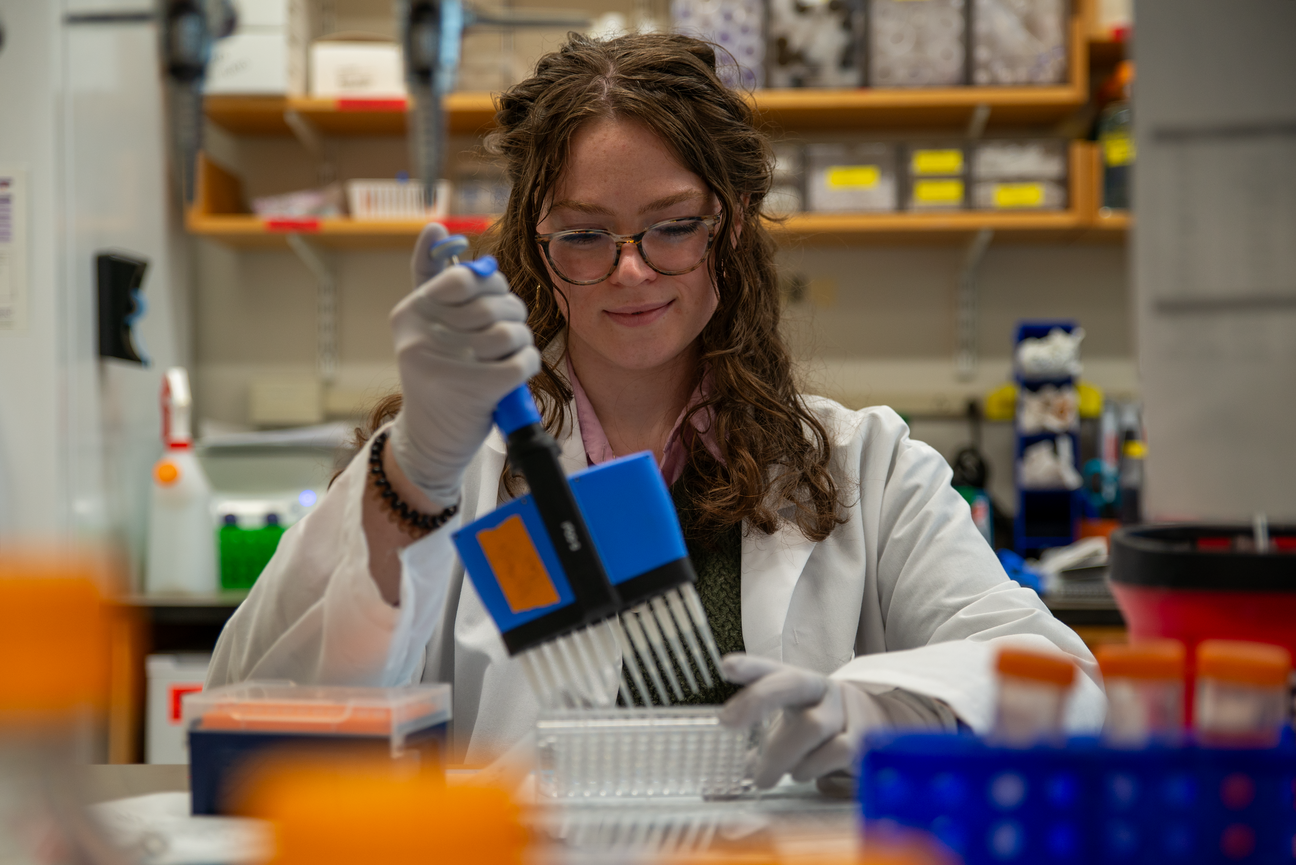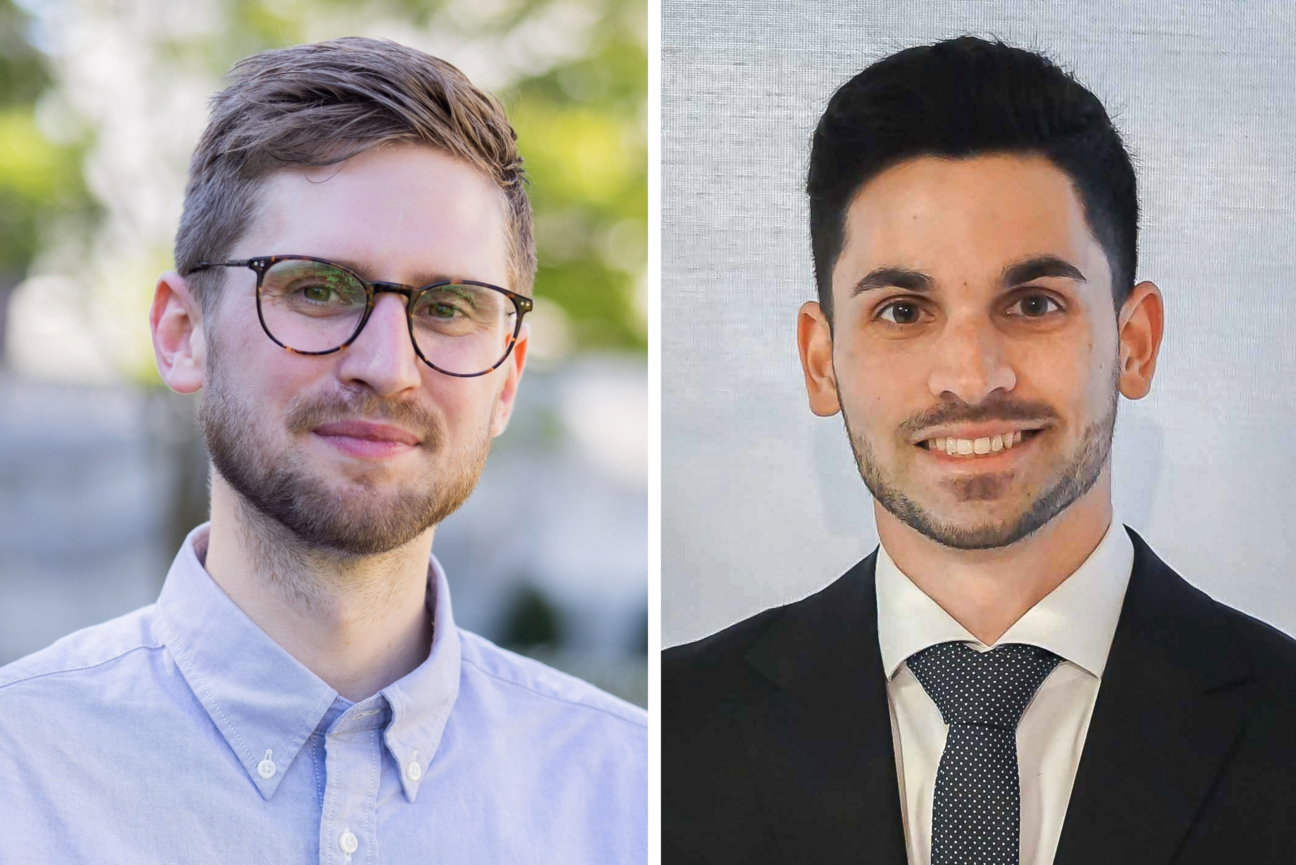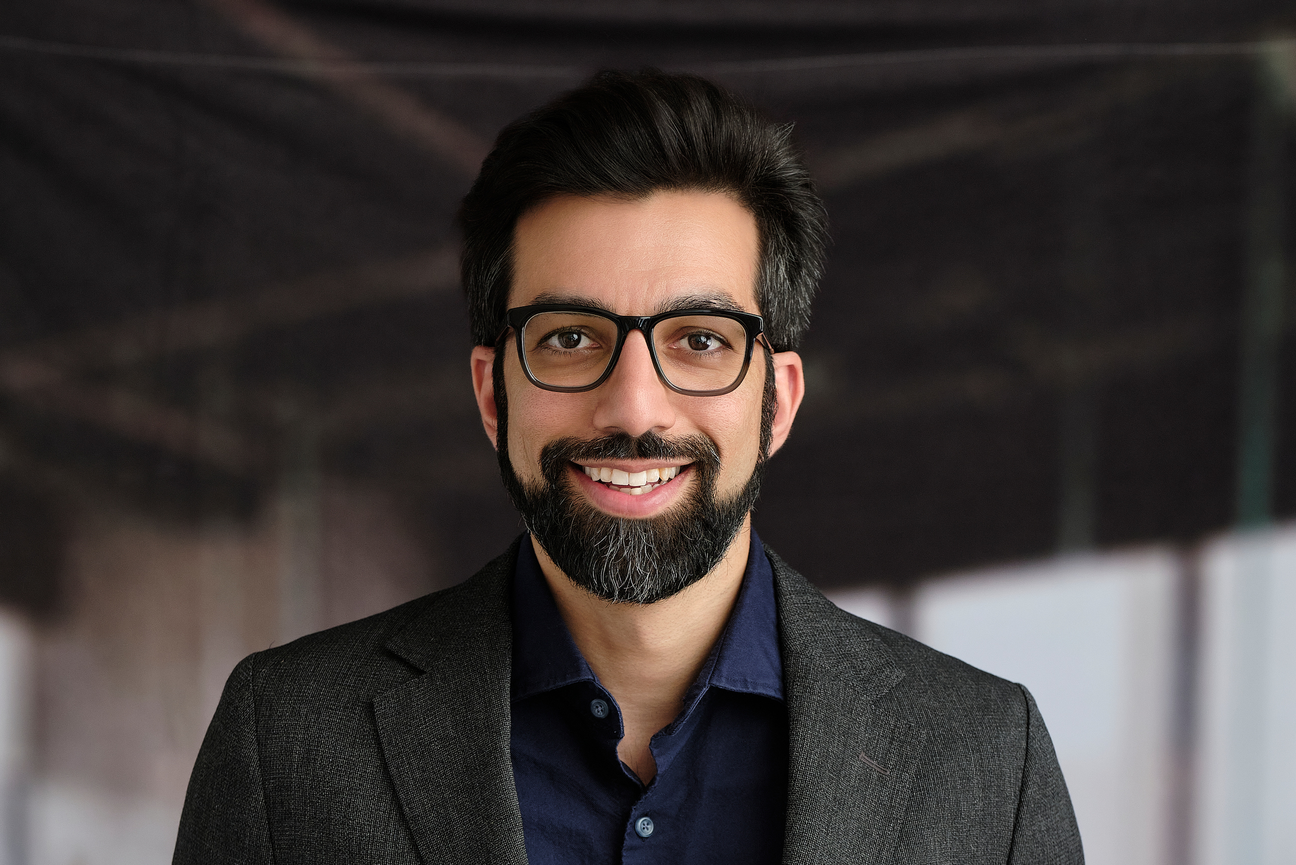
Steven Lee/Whitehead Institute
Whitehead Institute physician-scientists see foundational science as key for patient outcomes
Whitehead Institute’s physician-scientists—researchers who also practice medicine—are highly motivated by the goal of improving patients’ outcomes. They work to achieve this in the clinic, where they diagnose and determine treatment plans for their patients, and in the lab, where they design experiments to discover new insights into diseases and develop new therapeutic options for patients around the world. What draws these physician-scientists to Whitehead Institute, a place that seeks to understand the foundational principles of biology, is the possibility of making paradigm-shifting discoveries that can lead to major advances in medicine.
“Understanding fundamentally what is happening in cells, what genes are doing, and what biological mechanisms are operating in our bodies is essential for understanding diseases and how to tackle them,” says Mickey Sloat, a student in the Harvard/MIT MD-PhD program and a researcher in Valhalla Fellow Kipp Weiskopf’s lab, who is working on how to develop better cancer immunotherapies. “If you don’t know how something works, how are you going to fix it?”

Mickey Sloat
Madeleine Turner/Whitehead Institute
Throughout biomedicine’s history, the quest to understand biology at a fundamental level has led to sea changes in how diseases are treated. For example, basic science, particularly microbiology and biochemistry, has led to the discovery and development of antibiotics that target bacterial infections, starting with the discovery of penicillin being produced by mold in a Petri dish. GLP-1 agonists, a class of drugs including Ozempic and Wegovy that are used to treat diabetes and drive weight loss, owe their origins to research into lizard venom. Cancer biology research, including understanding cancer cell growth and signaling pathways, has led to the development of targeted cancer therapies, such as inhibitors of growth factor pathways, while immunology research has led to the development of cancer immunotherapies. These advances have led to huge improvements in survival rates and quality of life for patients with certain cancers or specific cancer-driving genetic mutations.
Bjorn Stolte, a postdoc in Whitehead Institute Member Richard Young’s lab and a pediatric oncologist at Dana-Farber Cancer Institute, works with children with leukemias, lymphomas, solid tumors, and brain cancers and hopes that a similar breakthrough could change the lives of his patients. “There have been incredible innovations in the treatment of certain cancers, but for a lot of my patients, the best treatment available is still chemotherapy, often combined with radiation and surgery. While current approaches can cure some patients or at least significantly prolong their lives, they do come with risks and adverse effects,” Stolte says. “I’m working at Whitehead Institute because we need to engineer that next wave of innovation with more effective and less invasive therapies. The only way to do that is to go back to the basic science and try to understand the fundamental mechanisms of how these diseases work.”

Bjorn Stolte (left) and Josh Abraham (right)
Courtesy of Bjorn Stolte and Josh Abraham
One feature of curiosity-driven basic research is that no one knows which discoveries will ultimately lead to medical breakthroughs. Basic research discoveries expand our understanding of biology, and it is often not immediately apparent how they may impact our understanding of health and disease. In many instances, advances come from the combination of several basic science advances.
Jaspreet Sandhu, a postdoc in Whitehead Institute Member Jonathan Weissman’s lab and a gastroenterologist at Massachusetts General Hospital, wants to improve outcomes for patients with fatty liver disease, a condition that is growing in prevalence for reasons that are not entirely understood. Sandu says, “Pharmaceutical companies often focus on improving medicines that we already have, but to create a brand-new drug category that’s going to have a big impact, we have to explore new biology. I joined Jonathan Weissman’s lab because they have developed very sophisticated approaches to systematically manipulate genes and couple that with studying environmental factors in order to better understand what causes a disease. Once we really understand what is happening in fatty liver disease, we can figure out how to prevent or treat it. Then we can personalize treatments for patients, and hopefully develop new types of drugs that are effective and have few side effects.”
One strength of Whitehead Institute that the physician-scientists here perceive is that it fosters collaboration between labs with different and often complementary sets of expertise. Whitehead Institute Valhalla Fellow Kipp Weiskopf, also an oncologist at Dana-Farber Cancer Institute, is working to develop new immunotherapies and bispecific antibodies. His research, which is directly focused on both fundamental biology—and at the same time—developing new therapies, could be done in a medical research center. However, he finds that being surrounded by labs doing fundamental research provides him with a breadth of knowledge and expertise that he wouldn’t get elsewhere. “We talk to our neighboring labs as they discover important information about how cells work and how cancer spreads, and we collaborate to develop powerful technologies and approaches that illuminate biology in new ways. We like to be the ones to ask: ‘how can we use this knowledge to develop new therapeutic strategies?’ For example, we have developed a new CRISPR screening platform with [Whitehead Institute Member] Jonathan Weissman’s lab to identify what controls the interactions between cancer cells and macrophages—a type of immune cell that we can trigger to eat cancer cells when we understand these interactions. We hope to develop new medicines that target these interactions.” Weiskopf sees physician-scientists as integral to the mission of any institution that is focused on biomedical research. He continues, “Ultimately, our goal is to design new therapies that benefit patients with cancer and other life-threatening diseases.”
Kipp Weiskopf
Gretchen Ertl/Whitehead Institute
Weissman lab postdoc Josh Abraham, also a pediatric hematologist and oncologist at Dana-Farber Cancer Institute and Boston Children's Hospital, seeks to understand how cancers evolve to become more aggressive, and how they can be pushed from an aggressive state back to a more benign one. The reason he chose to work at Whitehead Institute, rather than a cancer research institute, is that he believes that big innovations require collaboration between people with different knowledge and skill sets. “There are problems in cancer that have remained unsolved for decades, and the only way we’re going to solve them is by integrating people with diverse expertise, people who speak different scientific languages, and get them to work together.” Abraham has found Weissman’s lab a very collaborative place, and he notes that the inclusion of physician-scientists into Whitehead Institute’s assembly of researchers brings an important perspective into the mix that makes the assembly stronger.
Along with the opportunity for fruitful collaborations, another Whitehead Institute resource that the physician-scientists value is its Innovation Centers, core science facilities that provide researchers with access to all of the latest technology. The Innovation Centers are staffed by dedicated researchers with technical expertise in areas such as genome sequencing, microscopy, and bioinformatics and research computing, who are available to help all Whitehead researchers design and carry out experiments.
“The Whitehead Institute Innovation Centers provide expertise on how to run experiments. The better you design your experiments, the better the results you get, and the closer you get to understanding a disease,” Sandhu says.
“The barrier to using these resources couldn't be lower, and I think there are probably few places in the world where the time from having an idea to running the experiment is shorter than at Whitehead Institute,” Stolte says.

Jaspreet Sandhu
Courtesy of Jaspreet Sandhu
Whitehead Institute’s physician-scientists also appreciate that the Institute is a place where they can follow unexpected leads, even if those leads take them beyond the boundaries of their lab’s main focus. Weiskopf says: “We primarily study therapies for cancer, but since our work targets immune cells, we are considering if what we learn could be used to develop therapies for other conditions such as autoimmunity, infectious disease, and neurodegeneration. At some institutes, we might not be able to pursue these directions, but Whitehead Institute welcomes researchers to pursue new research opportunities.” Several labs at Whitehead Institute have successfully expanded into different fields over the years, following the science where it leads them, so Weiskopf knows that he would be supported if he were to broaden his studies into new research areas.
Basic research can be arduous and frustrating, full of dead ends and difficult puzzles to crack. The physician-scientists are driven to push through these challenges in order to solve a common frustration that they experience in the clinic: having to give patients an explanation or a treatment option that is “just not good enough.”
Sloat says: “I’ve encountered a lot of patients who ask why there aren't better treatment options for them, why they have to undergo risky and painful treatments with uncertain odds of success. A big part of why I want to be a physician-scientist is so I can say: I’m working on that. I will help you the best way I can today, but I also want to make sure that no one else has to go through what you’re going through in the future.”
When these physician-scientists experience frustration or sorrow at the limitations of what medicine can currently offer their patients, they return to their labs at Whitehead Institute motivated by their mission to discover what more is possible to offer.
Topics
Contact
Communications and Public Affairs
Phone: 617-452-4630
Email: newsroom@wi.mit.edu


